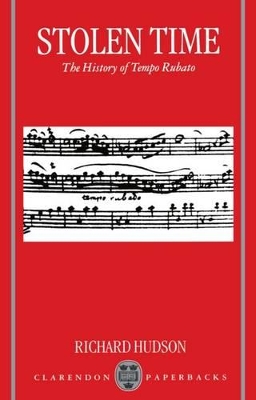Clarendon Paperbacks
1 total work
The history of tempo rubato (`stolen time') is as old as music itself, composers and performers ever introducing expressive fluctuation of the tempo contrary to music's precise notation. The technique has been variously described by theorists and composers as `an honest theft', `a pernicious nuisance', even `seductive' (by Franz Liszt), yet it remains integral to the performance and history of music.
Professor Hudson's book is the first to present the complex history of this device. He identifies and traces the development of two main types of rubato: an earlier one in which note values in a melody are altered while the accompaniment keeps strict time, and a later, more familiar, one in which the tempo of the entire musical substance fluctuates. In the course of his narrative he ranges widely over western music, from Gregorian Chant to Chopin, from C.P.E. Bach to jazz, quoting extensively
from the writings of theorists, composers, and performers. In so doing he not only suggests new ways of approaching the rubato in the music of nineteenth-century composers like Chopin and Liszt, where we expect to encounter the term, but also illuminates the music of earlier and later periods,
revealing its use even in the music of that most metronomic of composers, Stravinsky. As such his book will be of wide interest and of particular relevance to performers. The text is illustrated throughout by some 150 music examples and a number of illustrations.
Professor Hudson's book is the first to present the complex history of this device. He identifies and traces the development of two main types of rubato: an earlier one in which note values in a melody are altered while the accompaniment keeps strict time, and a later, more familiar, one in which the tempo of the entire musical substance fluctuates. In the course of his narrative he ranges widely over western music, from Gregorian Chant to Chopin, from C.P.E. Bach to jazz, quoting extensively
from the writings of theorists, composers, and performers. In so doing he not only suggests new ways of approaching the rubato in the music of nineteenth-century composers like Chopin and Liszt, where we expect to encounter the term, but also illuminates the music of earlier and later periods,
revealing its use even in the music of that most metronomic of composers, Stravinsky. As such his book will be of wide interest and of particular relevance to performers. The text is illustrated throughout by some 150 music examples and a number of illustrations.
